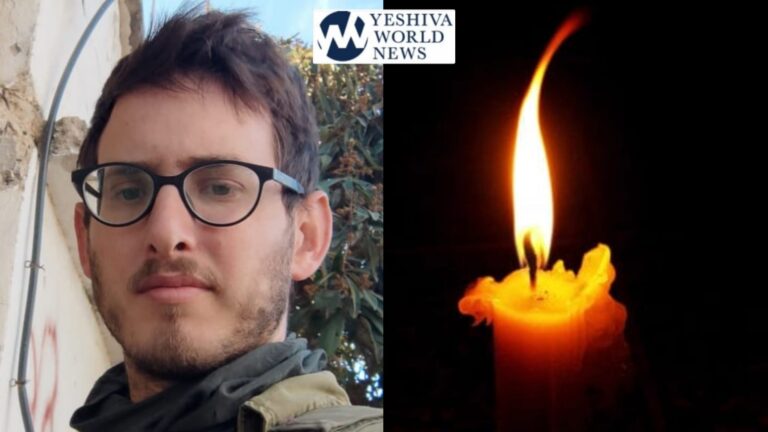V’atah kach lecha besamim rosh mar deror chamesh me’os (30:23)
When the Megillah first introduces us to Mordechai, it tells us not only his name, but the names of several of his ancestors, recording that he was Mordechai the son of Yair, who was the son of Shimi, who was the son of Kish (Esther 2:5). Why does the verse mention all of these generations, especially when the commentators point out that these weren’t his actual father, grandfather, and great-grandfather, but more distant ancestors? The Gemora (Megillah 12b) explains that each name teaches us something: “Ben Yair” teaches that Mordechai was “me’ir eineihem shel Yisroel bi’tefilaso” – he lit up the eyes of the Jews through his prayers, “Ben Shimi” indicates that Hashem was “shama el tefilaso”– listened to his petitions, and “Ben Kish” hints that “hikish al dal’sei Rachamim” – Mordechai knocked on the doors of Mercy.
The Vilna Gaon explains that a person has 4 primary senses: sight, hearing, smell, and speech. Three of these are needed for the purpose of learning Torah: sight to see what one is learning, hearing to listen to what the Rabbi is teaching, and speech to share one’s knowledge with others. The sense of smell has no connection to Torah study, but its place is in the Divine Service in the Temple, as the verses in the Torah which discuss the offerings repeatedly speak about them as being a “reiach nicho’ach l’Hashem – pleasant smell to Hashem. Today when we don’t have offerings, we instead have prayer in their place.
The Gemora in Chullin (139b) asks where Mordechai is hinted to in the Torah, and it answers that he is alluded to in the beginning of Parshas Ki Sisa, where the Torah lists the choice spices that were used in creating the anointing oil. The first of the spices is called “mar deror” – pure myrrh – which the Targum translates into Aramaic as “mara dach’ya”, which sounds like Mordechai.
The Vilna Gaon explains that the Torah is teaching us that the choicest of all of the spices is Mordechai, which means that he is the most connected to the concept of prayer which corresponds to the sense of smell. For this reason, the Gemora teaches that he had all four of the senses present in his prayers, as he lit up the eyes of the Jewish people with his entreaties, Hashem listened to his prayers, he knocked on the doors of Mercy by speaking his petitions, and his very name and essence connote that his prayers were the epitome of a “reiach nicho’ach l’Hashem.”
The Haggadah Shel Pesach Reiach Duda’im takes this Gemora one step further. The Rambam writes (Hilchos Klei HaMikdash 1:3) that the pure myrrh in the anointing oil was made from the blood of a non-kosher animal from India. The Raavad disagrees vehemently, arguing that no part of a non-kosher animal could ever be part of something that is used in the Beis HaMikdash.
The Kesef Mishneh defends the Rambam by explaining that since the substance in question is dried out and ground into a fine powder, it’s considered a totally different object and is therefore permitted even though it originally came from a non-kosher animal. Even so, why is Mordechai alluded to specifically in an object which has such questionable origins?
The Medrash comments on a verse in Iyov which says (14:4) Mi yitein yahor mi’tamei by explaining that this verse refers to the concept of something pure coming out of something impure, such as the red heifer making one person pure but another person impure. One of the examples given is the pure and holy Mordechai who was descended from the impure Shimi ben Geira. This is alluded to by the fact that Mordechai’s name is hinted to in a non-kosher animal which according to the Rambam finds its way into the Beis HaMikdash.
As far as why Mordechai’s name is alluded to in the Targum instead of in an actual verse in the Torah, a sefer called Divrei Purim explains that because a critical part of the miracle of the Megillah was due to Mordechai’s knowledge of other languages so that he could understand the plot of Bigsan and Seresh who spoke in a foreign language assuming that nobody listening could understand them, Mordechai’s name is therefore hinted to in the Targums translation into a foreign language.
As an interesting aside, although the Gemora provides a source for Haman from a verse in Parshas Bereishis, Rav Yosef Chaim Zonnenfeld suggests that he is also alluded to in the section of spices together with Mordechai. Of the 11 spices, all are sweet-smelling except for Chelbenah – galbanum (30:34) – which has a very foul odor. Not surprisingly, the word çìáðä has the same numerical value as Haman.
V’shamru V’nei Yisroel es haShabbos la’asos es haShabbos l’dorosam bris olam beini u’vein B’nei Yisroel os hee l’olam ki sheises yamim asah Hashem es haShomayim v’es ha’aretz uvayom ha’shevi’I shavas vayinafash (31:16-17)
These verses discuss the mitzvah of observing and guarding Shabbos, which is a sign between Hashem and the Jewish people. In commanding the Jewish people to observe Shabbos as an eternal covenant, why does the Torah write the word “olam” – forever – with the letter “vav” and then switch one verse later to write it without the letter “vav?”
The Gemora in Shabbos (69b) records an interesting dispute regarding the law governing a person who finds himself lost in the desert, and because he doesn’t know what day it is, he is unsure when to observe Shabbos. Chiya the son of Rav maintains that the person should observe the following day as Shabbos and then count six days before again observing Shabbos. Rav Huna argues that he should first count six days and only then observe the first Shabbos.
The Gemora explains that Chiya the son of Rav derives his opinion from the first person, Adam, who was created on Friday. For Adam, Shabbos was the next day, followed by six days of the week and then another Shabbos. Rav Huna, on the other hand, focuses on the Creation of the universe. From this perspective, first there were six days of the week and only then came Shabbos. The law is decided in accordance with the opinion of Rav Huna.
The Vilna Gaon brilliantly suggests that the anomaly in our verses teaches this law. Because the second occurrence of the word “forever” is written without a “vav,” it can also be read as meaning “hidden.” The Torah prescribes that a person to whom Shabbos is “hidden,” as he is lost in the desert and doesn’t know which day of the week it is, should follow the order of the Creation of the world as per the opinion of Rav Huna, in that first there were six weekdays (ki sheises yamim asah Hashem es ha’Shomayim v’es ha’aretz) and only then came Shabbos (u’vayom ha’shevi’i Shavat vayinafash).
Luchos kesuvim mi’shnei evreihem mi’zeh u’mizeh heim kesuvim (32:15)
The Gemora in Megillah (3a) notes that because the letters in the Tablets were carved out from one side all the way through to the other, it was a miracle that the letters mem and sameach remained in place. All of the other letters were partially connected to the rock around them. Because these two letters were circular, the piece of stone in the middle formed from carving them out was completely unattached and would have fallen out if not for this miracle.
In his blessing to his son Yissochar (Bereishis 49:15), who was one of the tribes most dedicated to Torah study, Yaakov said Vayehi l’mas oveid. It has been a sad fact throughout Jewish history that the institutions and individuals focused on learning and teaching Torah have often found themselves strapped for funds without any apparent source of assistance. Rav Gedaliah Schorr beautifully suggests that Yaakov specifically referred to Yissochar’s descendants with these two letters – mem and sameach – to hint that just as these letters inexplicably remained intact without any support, so too will those who dedicate their lives to the study and teaching of Torah miraculously succeed in their mission.
Answers to the weekly Points to Ponder are now available!
To receive the full version with answers email the author at [email protected].
Parsha Points to Ponder (and sources which discuss them):
1) Rashi writes (30:34) that one of the spices included in the incense – galbanum – had a foul aroma, but it was included to teach us the importance of included wicked Jews when we pray and fast. If one has a choice between praying in a minyan where everybody is righteous or in a minyan where some are wicked, which should he choose? (Sefer Chassidim 770, Ayeles HaShachar)
2) The Gemora in Yoma (85b) derives from 31:16 that we are required to desecrate Shabbos to save a fellow Jew’s life. If a Jewish court has convicted somebody of a capital crime and sentenced him to death, may one still desecrate Shabbos in order to save his life? (Biur Halacha 329:4)
3) Rashi writes (32:29) that the righteousness of the tribe of Levi during the sin of the golden calf earned them the right to serve in the Temple instead of the first-borns. Still, Rabbeinu Bechaye writes that even today it is a great merit to be a first-born, and this is still considered a spiritual advantage relative to other Jews. Where do we find that this advantage is legally taken into account to give a first-born precedence due to his additional holiness? (Mishnah Berurah 128:22)
4) The Gemora in Gittin (60b) derives from 34:27 that it is forbidden to say parts of the Written Torah by heart. Is it permitted to say Tehillim from memory? (Shu”t Chavos Yair 175, Chai Odom 8:11, Mateh Ephraim 619:23, Kaf HaChaim Orach Chaim 49:6, Mishnah Berurah 49:6, Piskei Teshuvos 49:1, Ma’adanei Asher 5768)
5) According to the opinion that the reading of Parshas Parah is a Torah obligation (Orach Chaim 685:7), is a woman required to come to the synagogue to hear it as she does for the reading of Parshas Zachor, and if not, what is the difference? (Moadim U’Zmanim 2:168)
© 2013 by Oizer Alport.










